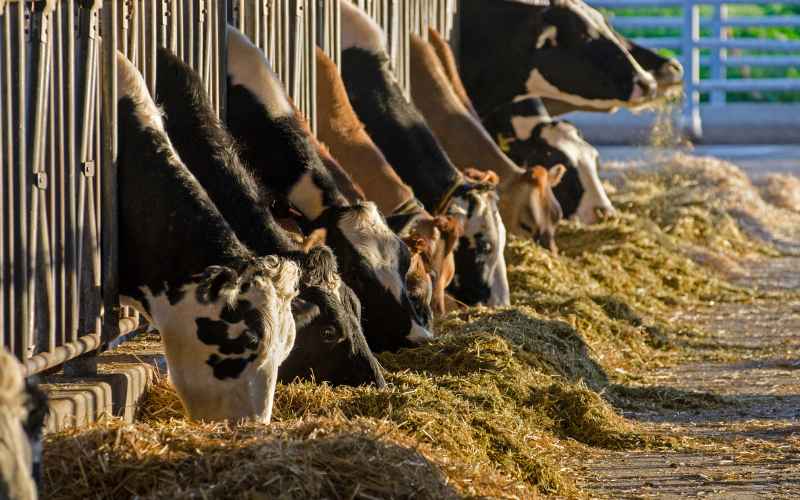
For lactating dairy cattle, potassium is an essential nutrient that plays a vital role in milk production, feed efficiency, and overall health. While potassium is often abundant in forage-based diets, its levels need to be carefully managed depending on the cow’s life stage, particularly around calving.
Potassium is involved in a range of critical biological functions:
For dairy cows, potassium is particularly important due to the large amounts lost daily through milk production. If this nutrient isn’t replenished, cows can experience decreased milk yield, reduced feed intake, and in severe cases, health complications such as displaced abomasums.
According to the National Research Council, extreme potassium deficiency (0.06% to 0.15% of dry matter) can significantly reduce plasma and milk potassium, weaken appetite, and slow weight gain. To avoid this, dairy diets must be carefully balanced, especially in high-producing herds.
The amount of potassium needed in a cow’s diet changes depending on her stage of production:
Early lactation (<75 days post-calving) is a period when cows often fall short in potassium. This can negatively affect milk production and milk fat content. Providing high-potassium feed during this phase can improve outcomes significantly.
While most of a dairy cow’s life benefits from a potassium-rich diet, the 3–6 weeks before calving is the exception.
During this time, the cow shifts large amounts of calcium into the mammary glands to produce colostrum. High dietary potassium can raise blood alkalinity, which interferes with calcium mobilisation. This can lead to hypocalcemia (milk fever), a major concern in fresh cows.
To reduce this risk, it’s important to feed a low-potassium (anionic) diet during the dry period just before calving. Once the cow has calved, potassium levels should be brought back up quickly to support milk production.
Producing the right hay for each stage of the dairy cycle takes planning. Here are some tips to help manage potassium levels in your feed:
Potassium is vital for dairy cattle, but timing matters:
By adjusting potassium levels in line with your cows’ lifecycle, you can improve animal welfare and productivity. If you’re unsure of your hay’s potassium content, consider feed testing or consulting a nutritionist to get the balance right.
Disclaimer: LocalAg provides this article as general guidance based on industry knowledge. Always consult with a vet or qualified nutritionist before making significant changes to your feeding strategy.
Search our marketplace